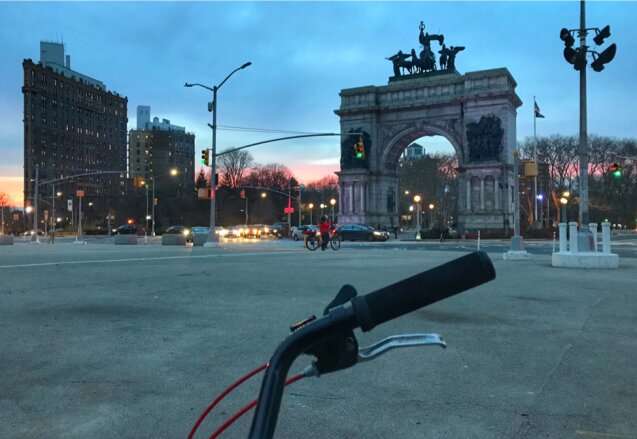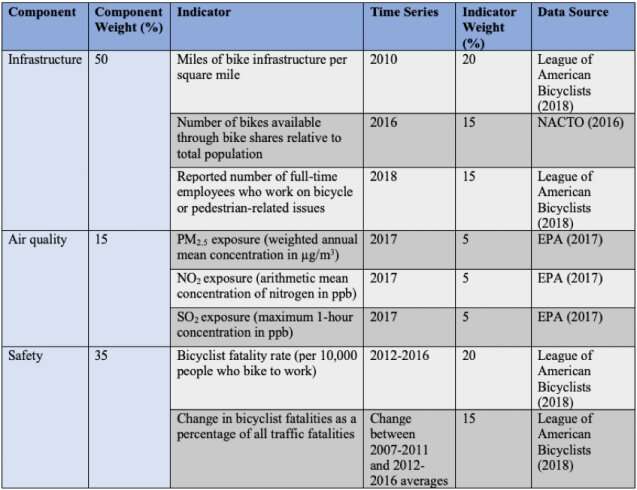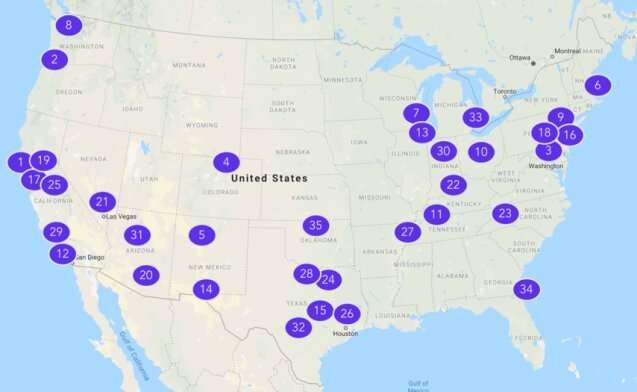In Brooklyn, Grand Army Plaza connects the urban jungle with Prospect Park’s 3.4-mile bike loop. Credit: Madeleine Siegel
Living in Brooklyn, I am often amazed by the time it takes to get around within the borough without a bike. The subway is designed so that most routes lead to Manhattan, making transportation within the other boroughs less efficient. Oftentimes, biking offers an opportunity to get around more effectively than taking the subway. Whether we get around by bicycle ourselves, have a friend who does, or even if we are simply annoyed by bicyclists, we might be inclined to think about how cities plan for bicyclists—or don't.
On an individual level, we can each make decisions about how to get around. But our decisions are also in the larger context of transportation infrastructure which determines which road, subway route or bike lane is easiest and most accessible. These decisions matter; transportation is responsible for nearly one-quarter of global carbon dioxide (CO2) emissions. It also plays a significant role in public health in regards to pollution exposure and exercise. Physical inactivity, the condition of being overweight, and obesity are responsible for 11 percent of deaths worldwide each year, as reported by the World Health Organization.
To investigate bicycle commuting in the 35 largest cities across the U.S., I was keen to explore what cities are doing to make it easier for individuals to get around by bike and how cities could do better. In a recent class on sustainability indicators, I had the chance to ask these questions.
Our class's instructor, Alex de Sherbinin, is an environmental data analyst extraordinaire and serves as the associate director for science applications at the Center for International Earth Science Information Network (CIESIN) at Columbia. His course focused on sustainability indicators—ways to measure the sustainability of social, economic, and environmental systems. By compiling several indicators, we can create aggregate indicators, also called indexes or indices. Sustainability indicators are crucial to translate heaps of data from different groups into more succinct conclusions that can be more easily interpreted by educators, policymakers, lawmakers, and the curious folks of the world. Additionally, creating opportunities for experience-sharing among decision makers is a key tool to improve urban infrastructure and support cities in becoming more environmentally and socially resilient.
A proposed sustainability index to rank cities’ bicycle friendliness, taking into account both infrastructure and health factors. Credit: Madeleine Siegel
I was driven to build an index that recognizes the interconnectivity of socioeconomics and the environment. While other rankings exist for the bicycle friendliness of US cities, the majority do not include environmental health factors. Addressing air pollution may not typically be a top priority when considering how to improve bicycle infrastructure. But including public health indicators is an important means of addressing sustainability in a more multidisciplinary and meaningful way. This kind of 'systems thinking' is not only helpful in understanding issues of environmental health and vulnerability, but also instrumental in cultivating community resiliency.
My index also considers social infrastructure, bicycle education programs, and air quality. To support this more holistic perspective, I included indicators such as the presence of youth and adult bicycle education programs, the number of full-time employees who work on bicycle-related issues in a city, and a city's average exposure levels to three of the most harmful air pollutants. Additionally, my index considers city infrastructure and safety through the number of miles of bicycle infrastructure (bike lanes, routes, and pathways) relative to a city's size, the number of bicycles available through bike shares relative to the total population, and bicyclist fatality rates. Sustainability indexes do not include indicators upon which cities cannot directly improve, such as hilliness or extreme temperatures.
To build the index, I gleaned data from three valuable sources: the Environmental Protection Agency (EPA), the National Association of City Transportation Officials, and the League of American Bicyclists. I also gathered input from folks within and outside of the academic community to gauge which indicators would be perceived as the most important and relevant. After performing a variety of statistical analyses and computations to reduce bias and put all the data onto similar scales, the last step was to put all of the indicators together into one index, which involved adding up the normalized and weighted individual indicators.
How the U.S.’s 35 largest cities stack up in the proposed ranking system. Credit: Madeleine Siegel
Putting together the data lets us see how the country's largest cities rank on bicycle friendliness with the range of factors considered. Cities such as San Francisco, Portland (Oregon), Washington, D.C., and Denver ranked highly while San Antonio, Detroit, Jacksonville, and Oklahoma City fell lowest in the ranks.
The index also reveals patterns across the data, showing how different indicators are correlated. For instance, one key implication from the data is the negative correlation between the rate of individuals biking to work and the rate of bicyclist fatality, meaning that cities with higher rates of commuting by bike have lower rates of cyclist deaths, and vice versa. This finding could build a persuasive argument for policymakers to advocate for the needed infrastructure to increase the number of bicyclist commuters.
Climate change brings transformation not only to cycles of the environment, but also to our perspective on the environment. Sustainability indicators, too, offer a new perspective on our relationship to the environment—both built and natural—and thus can help us envision a more resilient future. How we envision the future determines how we will act and, in turn, will shape the trajectory of climate change. Thus, by using sustainability indices to improve access to alternative methods of transportation, cities can encourage cycling to help change the climate cycles.
Provided by Earth Institute, Columbia University
This story is republished courtesy of Earth Institute, Columbia University http://blogs.ei.columbia.edu.


























